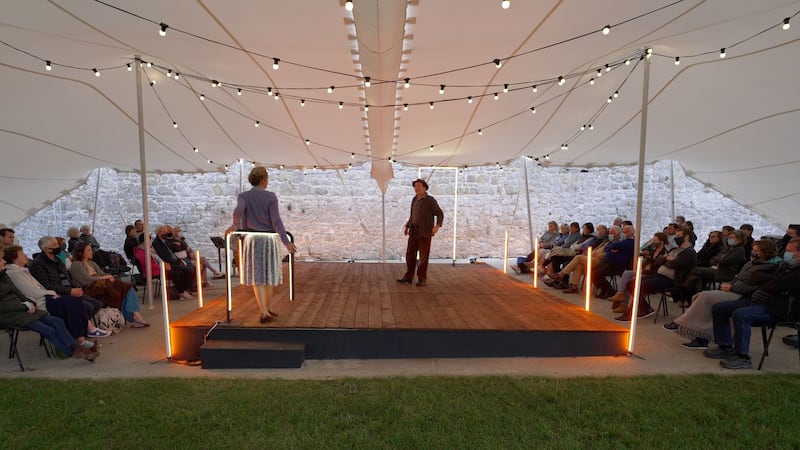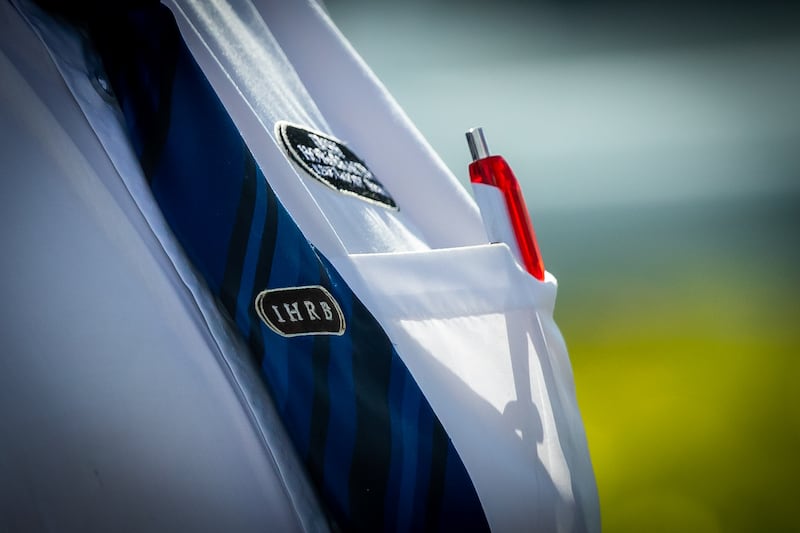“I’ve seen it at Kilmallock,” says writer Kathleen MacMahon. ”It was amazing, really, because we were, in fact, in the middle of the fields.”
The title story of a collection of Mary Lavin’s short stories, In the Middle of the Fields, has been adopted rather than adapted as a play which is to launch this year’s Fit-Up Festival in Ballydehob in July. A celebrated author herself, MacMahon is a granddaughter of Mary Lavin, and familiar with the house where the action of the story is set. This was Lavin’s home in Bective, Co Meath.
“I knew it, the Abbey Farm, very well. It really did sit among the fields, within the trees, the river around it. It was built by Mary and her first husband William Walsh and I think the 100 acres of land was a wedding present from her father. The story captures that location, you get the feel of it from her words and now the wonderful thing is that it’s going back to Bective.”
The other wonderful thing may be that it’s going back as part of this year’s Fit-Up Festival, which brings theatrical productions to rural towns or townlands around the country as if reviving the tradition of small touring companies travelling from place to place often with rudimentary sets and much-worn costuming. Very often too with equally worn actors, all of whom combined to fit up each venue to accommodate their performances.
READ MORE
Possibly their most famous forerunners would be the Players from Shakespeare’s Hamlet. Lennox Robinson took a swing at it also with Drama at Inish, probably at much the same time as Anew McMaster with a troupe which included the young Harold Pinter made the fit-ups flare around Ireland to the long-lasting dismay of the Catholic hierarchy.

That was so fervent an antipathy that Geoff Gould, of Blood in the Alley theatre company and who has re-imagined and reactivated the fit-up style since 2009, remembers that his own grandfather Geoffrey O’Donoghue was read off the local altar for building a shed to house the storyteller Rosie and the Red Caravan. “She was a travelling theatre in herself but it was always raining and wet so Geoffrey and three of his pals put up a shed for her. The parish priest was livid.”
It might be suspected from stories like this that Mary Lavin’s literary success depended on a popular “Irishry”. Far from it. Born in Massachusetts in 1912 and brought to Ireland and then to Bective when she was 10 years old, she was, MacMahon says, a sophisticated, cosmopolitan writer, working from a rural circumstance but with an international resonance, the holder of two Guggenheim Fellowships (1959 and 1961) and introduced to the New Yorker by JD Salinger where she became a contract writer for the magazine, “the most prestigious place to be published”.
For much of her life, Lavin was also writing her novels and short stories against the grain of conventional and mostly male Irish authors, although her letters, now in University College Dublin’s special collections, include correspondence with Elizabeth Bowen. The big library bookcase at Doneraile Court in Co Cork contains a spread of Bowen’s titles, all from the library of Mary Lavin; readers of both will know that they shared in their work an awareness of emotional ambiguity.
Lavin’s acquisition of distinctions and awards began with the James Tait Black Memorial Prize in 1942 for her first collection, Tales from Bective Bridge. The list grew to include the Katherine Mansfield Award and several significant American prizes and publications, while in Ireland her literary status was recognised early by an honorary D Litt from the NUI in 1968, subsequently by the presidency of the Irish Academy of Letters from 1971 to 1975 and then membership and Saoi of Aosdána from 1983. She died in Dublin in 1996.
What MacMahon remembers is a grandmother to whom the writing life was all jumbled up with daily life; there was no fuss about her work, no sense of self-importance. The visiting children were never told to keep out of the way. She was a grandmother to whose bed one retreated if startled by a nightmare. “When her husband brought up the breakfast tray in the morning there would be reams of foolscap paper on it along with the pot of tea.”
As a writer, says MacMahon, she was not sentimental. “She always had that reach beyond, she always went beyond the place where a lesser writer would stop. When the New Yorker ran a series of stories from the archives they asked Colm Tóibín to select a story and he chose this, In the Middle of the Fields, which had been published in 1967.”
Director Joan Sheehy remembers reading Mary Lavin in her late teens and being fascinated by her ability to create a memorable image within a couple of lines
According to Maurice Harmon’s contribution to her entry in the Dictionary of National Biography, 1967 was at the high point of Lavin’s career. In the Middle of the Fields has a young widow discussing the cutting of her grass with a neighbouring but unfamiliar farmer. Normally self-confident, this encounter awakens the woman’s sense of vulnerability; in the quiet style which is Lavin’s keynote invitation to the reader, the tension between the pair is subtle: “she wrote about widows”, notes Harmon, “who refuse to be diminished by death and loss, retain warm memories of love, and meet experience in an open and capable manner”.
Director Joan Sheehy remembers reading Mary Lavin in her late teens and being fascinated by her ability to create a memorable image within a couple of lines. When she heard Tóibín talking about this story in a New Yorker podcast she thought how it might be possible to reconfigure it as a play, but without changing any words of it at all.
“I don’t believe that a stage adaptation can capture an entire book or story. Sometimes it may result in something so far removed from the original material that while it can be great, it’s not the same thing. So I haven’t adapted it. Instead, I let the words tell the story, a story which has no easy answers to give, it has a moral complexity and the resolution is left open. But it also has structure. Lavin is looking at the world in a measured way and the writing moves in different phases which preserve a dramatic coherence.”
How then does Sheehy’s approach manage the narrative or descriptive elements? “These are picked up by the characters themselves, It seems to work effectively and it unifies the acting, it’s true to the integrity of the story and it’s true to the writer as well. That was my main interest, to find Mary Lavin’s voice and to be true to it.”
Novelist Alice Ryan is the youngest of Mary Lavin’s grandchildren and is “totally rejoiced” that someone has seen again the quality and the value of this work
Wondering how to stage the piece, Sheehy remembered “the stretchy tents” of the fit-ups and went to Geoff Gould, with whom she has worked on several productions. Gould says he had never heard of Mary Lavin. “Now I think she’s a wonderful writer, and I believe Joan has turned a short story into a superbly accessible piece for everyone while at the same time championing Mary Lavin’s work. It’s an ideal product for the fit-up mode which works to make sure that people in rural areas get the chance to see professional material and performances so that folk in Ballydehob or Bartlemy are as equally up to theatrical speed as folk in Dublin’s Blackrock.”
The novelist Alice Ryan is the youngest of Mary Lavin’s grandchildren and is “totally rejoiced” that someone has seen again the quality and the value of this work. She recalls that after the death of Lavin’s first husband, she was a single parent of three daughters. “I think the writing for her was a kind of need, she wasn’t writing to say ‘look at me’ but writing was the thing that was going to get her through.”
Now she sees that Lavin’s themes are timeless, that in so many ways it’s the wisdom of the human heart which has kept them current. She believes that In the Middle of the Fields is wonderful for its subtlety and in asking the reader to do a lot of thinking.
“I always feel that her stories are not known very widely, but those who do know them absolutely cherish them.”
- In the Middle of the Fields has been published by New Island in its Modern Irish Classics series. Kathleen MacMahon’s new book The Home Scar is published by Sandycove. Alice Ryan’s novel There’s Been a Little Incident is published by Head of Zeus. The West Cork Fit-Up Festival opens in Ballydehob, Co Cork on July 11th; is at Richmond Barracks Dublin July 18th-29th and at Bective Mills, Co Meath from August 1st to 5th.















